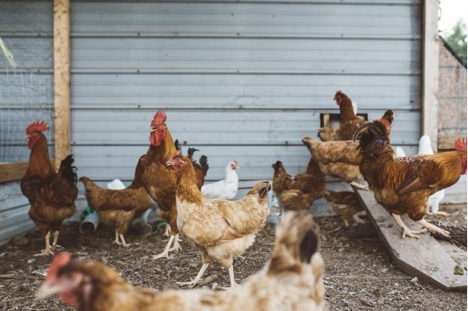
For many people, starting their homesteading project in their backyard can be an exciting idea. But homesteading is something that’s not done overnight. Heck, it will take you months – if not years – to master the basics of homesteading.
But that doesn’t mean you should walk away from your dream. After all, homesteading is a great way to live a frugal life and be green at a time when climate change is getting worse.
So here are eight simple steps to remember when you’re just starting your homesteading project.
1. Do Your Research First
Homesteaders who have been practicing this lifestyle for years will always tell beginners to do their research first. Most of the time, due to the charming idea of living off a small piece of land and growing their food, people would often dive right in and blindly start their homesteading project.
This isn’t just impractical but can be financially damaging as well. So do your research first. List the things you want to include in your homestead and see if it’s viable in your location.
2. Plan Everything Out
From plants and animals to the fences, cages, and the hundred different variables involved in homesteading – you should have a solid plan on how to move forward. This also includes things that might go south.
Research common pests that plague chickens and how to deal with them. Compile data about the best way to grow your garden. Is there a way to cheaply build fences and cages without sacrificing quality? Again, research all the variables you’ve identified.
3. Always Start Small
Once you have a concrete idea of how to start your homesteading, it’s time to dive in. But always remember to take baby steps in whatever project you plan on doing first.
This will save you time, money, and sanity.
If you’re planning to raise chickens, maybe just start with three or four of them, then build from there. The same treatment should be applied to your garden.
Try to be proficient at tending to your livestock and vegetables. Jot down the things that work and don’t work. Observe, adapt, and always try to learn new things.
4. It’s OK to Fail
One of the most devastating things that a beginner homesteader will experience is when a project fails. Animals die. Vegetables succumb to pests. The operational costs are bleeding money rather than saving them.
Expect all of these to hit you at some point and try to learn as much as you can from your mistake so you can avoid them in the future. As that popular saying on the internet goes, insanity is doing the same thing repeatedly and expecting the same result.
5. Ask the Experts
If you can, try to find someone in your area who’s been in the homesteading life for years. Their knowledge and experience will be valuable for your projects.
For instance, did you know that you need to choose your chicken breeds based on the climate in your area? That’s right.
For cold climates, it’s typically suggested that chickens with small combs and heavy feathering are the way to go. Thus, the Plymouth Rock chickens and Astralorps are your best bet.
For warmer climates, choose those with larger combs and small body mass. These include – but not limited to – Leghorn, Easter Egger, Welsummer, Golden Campine, and White Crested Black Polish.
In addition to this, you should also consider other factors like weight, egg production, resilience, and whether or not you want to start with chicks or adult chickens.
While this information is available on the web, it’s still best to ask a veteran homesteader as they know your location well and has a solid experience of what works and what doesn’t. Aside from gaining valuable knowledge, you’ll also be making friends along the way, which is also important for homesteading beginners.
6. Do the Dirty Work
Homesteading doesn’t just mean you’re raising farm animals and tending your vegetable garden. It’s everything under the sun. If the faucet is dripping, you’re going to have to learn to repair that leak yourself. If your trusty truck has broken down, you may need to repair it yourself to keep your day going. The same goes for damaged fences, cages, roofs, and all the other myriad things that can go wrong in your homestead.
It may be hard work, but the experience you gain from being dependent will be indispensable. And it’ll save you money, too.
7. Recycle
This might be obvious for some, but for people who are used to living a fast-paced lifestyle and wish to transition to homesteading, not so much. Save your water bottles as it can be used for growing seeds. Don’t throw away your wooden pallet as it can be used for repairing chicken cages.
8. Enjoy the Simple Life
As mentioned earlier, homesteading life can be taxing for beginners and most would usually give up on it before making solid progress. This is due to high expectations and not enjoying the things they’re learning on their journey.
If you’re really intent in practicing a frugal, self-sustaining lifestyle, you have to learn to enjoy it. There may be hard days, but it will be worth it years down the road. So stick with it and learn to dance in the rain.
